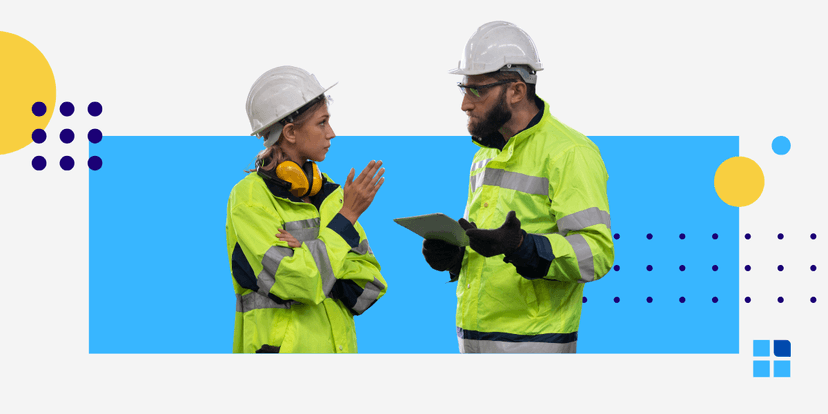In any active work environment, especially in complex manufacturing processes, mistakes can happen. Even the most skilled and dedicated employees are human, and human errors (whether from fatigue, distraction, or a simple lapse in memory) are inevitable. Traditionally, companies have relied on rigorous quality control inspections at the end of the line to catch these mistakes. But what if you could design your processes so that making a mistake was either impossible or immediately obvious? This is the core idea behind Poka-yoke.
The Poka-yoke approach is a fundamental pillar of the Toyota Production System and a powerful tool for anyone committed to continuous improvement. It’s a proactive strategy that focuses on error proofing at the source, rather than just inspecting for errors after the fact.
This guide will provide a deep dive into the term Poka-yoke. We'll explore its origins, provide multiple examples of Poka-yoke from both the factory floor and our daily lives, and show you how to implement Poka-yoke to improve quality, enhance worker safety, and reduce waste in your own operations.
What is Poka-yoke?
The term Poka-yoke (pronounced poh-kah yoh-keh) is a Japanese phrase that translates to "mistake proofing" or "error proofing." You may also see it spelled as poke yoke, but Poka-yoke is the more accurate term. The concept was developed in the 1960s by Shigeo Shingo, an industrial engineer at Toyota who was instrumental in developing the Toyota Production System.
The philosophy behind Poka-yoke is elegantly simple: design the process to prevent defects from occurring in the first place. Instead of relying on constant operator vigilance or end-of-line inspections, a Poka-yoke is a mechanism that makes it physically impossible to make a mistake, or it provides an immediate warning when a mistake is made.
This method is not about blaming the worker for making a mistake. In fact, it's the opposite. It acknowledges that inadvertent errors happen and shifts the focus to improving the process so that those errors can't result in a defect. A good error-proofing device makes the correct action the easiest and most obvious one. This is a core principle of lean manufacturing.
The two main types of Poka-yoke
While there are countless ways to implement this technique, most solutions fall into one of two main categories. Understanding these two types helps in brainstorming the most effective device for your specific problem.

Prevention Poka-yoke
This is the strongest and most effective form of mistake proofing. A prevention-based device makes it physically impossible for an error to occur. In essence, it designs the mistake out of the process entirely.
- Manufacturing example: A fixture on an assembly line might have guide pins that only allow a part to be inserted in the correct orientation. If an operator tries to put it in backward or upside down, it simply won't fit. This is a perfect Poka-yoke example.
- Real life example: A modern USB-C cable. Unlike older USB-A cables, it's symmetrical, so you can't plug it in the wrong way. The design itself prevents the error.
When you can use a prevention method, you eliminate the need for correction or inspection for that specific error.
Detection Poka-yoke
A detection mechanism doesn't make the error impossible, but it immediately signals that a mistake has been made so it can be corrected on the spot. This is useful when preventing the error outright is too complex or costly.
- Manufacturing example: A sensor on a parts bin that sounds an alarm and stops the conveyor belt if an operator forgets to install a bolt on a component passing by. It detects the missing step.
- Real life example: The chime in your car that alerts you if you open the door with the headlights still on. The car detects a potential error (a dead battery) and warns you.
This type of Poka-yoke is crucial for preventing a small error from traveling down the line and becoming a much bigger problem. The Poka-yoke approach values both prevention and immediate detection.
Examples of Poka-yoke in manufacturing
The factory floor is where the Poka-yoke concept was born, and it’s where you can find some of the most ingenious examples of mistake proofing. These solutions are often simple, low-cost, and incredibly effective.
Here are a few classic examples:
- Guide pins and fixtures: As mentioned earlier, designing a jig or fixture so that a part only fits one way is a common and powerful solution. This prevents incorrect assembly, a frequent source of human errors.
- Colour-coded parts: For assemblies that use similar-looking components (like screws of different lengths or wires of different gauges), colour-coding is a simple visual method that helps operators grab the right part every time.
- Light curtains and sensors: These are often used for worker safety. A light curtain is a sensor that creates an invisible barrier around a dangerous part of a machine. If an operator's hand breaks the barrier, the machine immediately stops. This is a critical safety mechanism.
- Torque-limiting wrenches: In many assembly production processes, tightening bolts to the correct torque is crucial for quality. A torque wrench that clicks or sends an electronic signal when the correct torque is reached is a device that prevents over- or under-tightening.
A good Poka-yoke is often so simple that you don't even notice it's there.
Examples of Poka-yoke in daily life
Once you understand the Poka-yoke philosophy, you'll start seeing it everywhere. Our daily lives are filled with clever error proofing designs that prevent errors.
Here is a familiar example or two:
- Washing machines: Many modern washing machines have sensors that detect an unbalanced load. They will stop the high-speed spin cycle from starting until the clothes are redistributed, preventing the machine from violently shaking or damaging itself. This is a built-in safeguard.
- Microwave ovens: A microwave will not operate unless the door is securely closed. The latch mechanism is a simple prevention device that ensures user safety.
- SIM card trays: The asymmetrical shape of a SIM card and the tray it sits in ensures you can only insert it in the one correct orientation. This is a perfect real life example of Poka-yoke.
- Electrical outlets: A three-pronged plug can only be inserted into the outlet one way, ensuring the appliance is properly grounded. This simple design is a form of mistake proofing.
These everyday examples show how effective this philosophy can be.
How to implement Poka-yoke in your processes
Ready to start error proofing your own work? To implement Poka-yoke is to embark on a creative problem solving journey. It's a key part of the continuous improvement cycle.
Here is a step-by-step guide to applying the Poka-yoke approach:

- Identify and define the problem: Start by selecting a process where inadvertent errors are a known issue. Use data to pinpoint the most frequent or costly mistake.
- Go to the source and analyze: Don't try to solve the problem from a conference room. Go to the shop floor and observe the process firsthand. Work with the operators to understand why the human errors are happening.
- Brainstorm potential mistake-proofing solutions: Once you understand the root cause, get the team together to brainstorm ideas. Ask: "How can we make it impossible for this error to occur?" (Prevention). Or, "If we can't prevent it, how can we make the error immediately obvious?" (Detection).
- Design, build, and test your solution: The best solutions are often simple and inexpensive. Create a prototype of your device and test it in the actual process. Does it effectively prevent errors without creating new problems?
- Implement and train: Once you've validated your solution, implement it fully. Train the operators on how the new mechanism works and, more importantly, why it's there.
- Measure and verify: After you implement the solution, track the error rate to confirm that your solution is effective. This data is crucial for demonstrating the value of your continuous improvement efforts.
The benefits of a Poka-yoke approach
When you implement mistake-proofing devices and thinking into your manufacturing processes, the benefits are immediate and far-reaching.
Here are some of the key advantages:
- Improved quality control: The most obvious benefit is a dramatic reduction in defects. The Poka-yoke method builds quality into the process, rather than relying on inspection to find mistakes.
- Increased worker safety: Many Poka-yoke mechanisms, like light curtains or two-hand controls, are specifically designed to protect operators from harm.
- Reduced waste and costs: By preventing defects, you reduce the significant costs associated with scrap, rework, and warranty claims.
- Higher productivity: Less time spent fixing mistakes and inspecting work means more time spent on value-added production.
- Empowered employees: This method improves the process so that employees can succeed. This boosts morale because it removes sources of frustration and allows people to focus on doing good work.
Poka-yoke in the digital age
The principles of Poka-yoke are just as relevant in the digital world as they are on the factory floor. Digital tools and software are filled with examples of digital mistake proofing.
Think about these common digital examples:
- Required form fields: A web form that won't let you submit until all mandatory fields (marked with an asterisk) are filled in is a prevention mechanism.
- Dropdown menus: Using a dropdown menu instead of a free-text field for something like a state or country prevents spelling errors and standardizes data entry. This is a simple but effective safeguard.
- Confirmation dialogs: When you try to delete a file, your computer often asks, "Are you sure you want to permanently delete this item?" This confirmation step is a detection method that prevents an accidental and irreversible action.
As our production processes become more digitized, the opportunity to implement Poka-yoke using software and digital tools will only continue to grow.
Start mistake proofing your work today
In conclusion, the term Poka-yoke represents a fundamental shift in how we think about quality. Instead of accepting human errors as inevitable and relying on inspection to catch them, the Poka-yoke approach challenges us to design better processes that prevent those errors from happening in the first place. It's a sign of a mature and respectful work culture that focuses on fixing the process, not blaming the person.
To make this philosophy a reality, your new, error-proofed standards need to be clearly documented and shared. This is where having a flexible tool for communication is critical. Our Lean Creator, for example, is a versatile document creation tool that simplifies the development and sharing of these essential documents.
Whether you are updating a standard operating procedure after implementing a new Poka-yoke device or creating a one-point lesson to explain the change, this solution provides the flexibility you need. By embracing the Poka-yoke philosophy and equipping your team with the right tools, you take a significant step toward achieving higher quality, better worker safety, and a culture of true continuous improvement.







